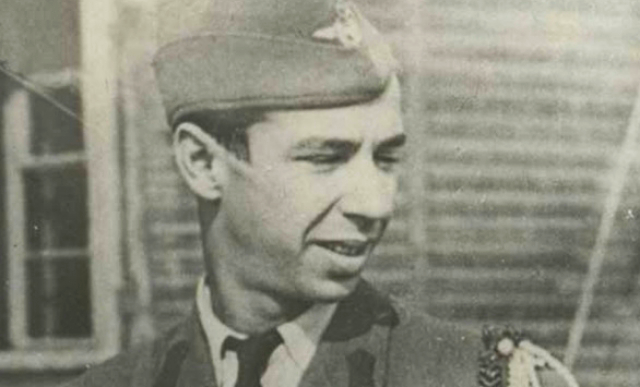Pilot Tudor Greceanu
One of the flying aces of World War II

Steliu Lambru, 06.06.2020, 14:00
Welcome
everyone, today we will be talking about pilot Tudor Greceanu, one of the
hundreds of thousands of Romanian heroes whose lives would be forever marked by
the end of the Second World War. He was born May 13, 1917 into a family of
noble roots. The oldest mention of the name Greceanu transpires in a chronicle
of Radu Greceanu, in the second half of the 17th century, in
Wallachia. Tudor Greceanu graduated the aviation school in 1939. He was one of
the 29 pilots, engineers and cabin crew to make it to the end of their class.
The aviator pursued his calling, at a time when becoming an aviator was very
fashionable for the young people who afforded it. Romanian aviation by then had
become a tradition. The name of inventor Aurel Vlaicu, who had passed away in
1913 while trying to cross the Carpathians onboard his aircraft, Vlaicu 2, was
a case in point. Previously, in 1906, Romanian aviator Traian Vuia would
attempt a takeoff onboard a heavier-than-air machine in Paris. Although
unsuccessful, his undertaking had impressed many. Finally, Henri Coanda’s
experimental aircraft of 1910 had made aviation very appealing for the young
Romanians of good stock, as well as to the adventurous and ambitious types.
Romanian military aviation would also stand out through some top-notch pilots,
such as Capitain Constantin Bâzu Cantacuzino, Captain Alexandru Șerbănescu,
Captain Gheorghe Popescu-Ciocănel, captain Horia Agarici and many others.
The Second World War started
September 1, 1939. Greceanu’s and other pilots from his generation were aware
they would soon be asked to sacrifice to defend the nation’s interests.
According to his own testimony, the pilots knew they would be sent into battle.
In the summer of 1940, France was under Nazi occupation. England was besieged
by German air raids while Romania saw Bessarabia, Northern Bukovina, Northern
Transylvania and Southern Dobruja cut off from its territory. This confirmed
what many had long foreseen – the Versailles peace treaty at the end of the
First World War was history. The year 1940 was one of crisis in the life of
23-year-old pilot Tudor Greceanu He wanted to quit the army, but his
resignation was refused. At the outset of the war he was training as a fighter
pilot in Bucharest. He owned six licenses, as a military pilot, fighter pilot,
flight instructor, two-engine aircraft pilot, nighttime pilot and zero
visibility pilot. He was also owned German, Italian and American pilot’s
licenses and badges.
His trial by
fire came when he was deployed to the Soviet front. The taking of Odessa in
1941 cost many Romanian lives. In an interview from the Center for Oral History
of 1993, Tudor Greceanu described the events:
A fighter
squadron generally consisted of 15 aircraft, which were not always combat
ready. At first they were, and we would count on at least 12 aircraft for every
day of battle. Some were undergoing repairs, others the technical checkup, some
had little flaws. But at one point, after Odessa had fallen, out of the total of
45 aircraft in our 3 squadrons, only 3 were combat ready. Because the planes
were never replaced. The state had initially bought 3 Messerschmitt 109 fighter
squadrons. When the aircraft arrived, they were assembled and prepared for
battle, and then they got to the front. Whatever aircraft got shot down,
deteriorated or entered repairs were taken off the squadron. Do you know how
much a single plane cost? 62 million lei, which was unthinkably expensive at
the time. You could build 62 10-storey buildings with that kind of money. After
Odessa had fallen, my unit returned only with 3 aircraft, of a total of 45.
During the war,
Lieutenant Tudor Greceanu had totaled 6.000 hours of flight time as part of
1.000 combat missions, bringing down 42 enemy aircraft. He was bestowed several
decorations, including the Knight of the Mihai Viteazu Order, third class.
Yet the end of the war did not bring him peace, quite the opposite. Having
returned to Romania in 1945, Greceanu learned that his German-born fiancée had
committed suicide, fearing deportation to the USSR. His brother had also been
imprisoned in the Soviet gulag. He was shortly arrested and sent to the Aiud
prison, while his parents were placed under home arrest, where they struggled
with disease and poverty. He was tortured in prison, where he lost both legs.
He survived, nonetheless, and was released in 1964. He died in 1994, aged 77,
in his modest studio in a workers’ district in Bucharest.
(Translated by
V. Palcu)





























